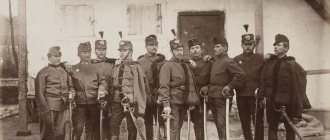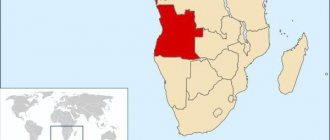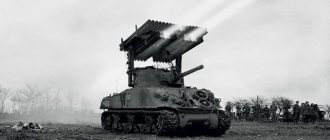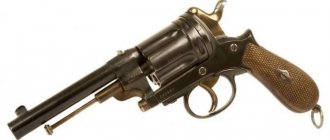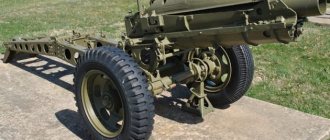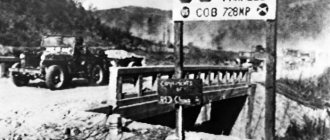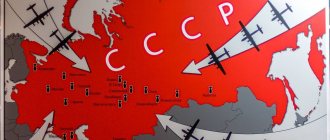Britain's war against the Boer republics - the South African Republic (Transvaal) and the Orange Free State (Orange Republic) was fought for power over the richest and strategically important territories in southern Africa.
Since the 17th century immigrants from Holland, France and other European countries, known as Boers, settled on these lands. They managed to win victories in a brutal struggle with the local population and establish successful farms, many of which relied on the labor of African slaves. The Boers were warlike and freedom-loving. They relied on their own strength in everything and did not tolerate the power of others.
Causes and beginning of the war
At the turn of the XVIII-XIX centuries. The Dutch Cape Colony (center - Cape Town), which occupied a key position on the route from Europe to India, was captured by England. The Boers did not recognize the new government. In addition, their interests were hit by the abolition of slavery in the British colonies in 1834. Many Boers left the Cape Colony and settled inland, forming in the 50s. XIX century the Orange Republic with its capital in Bloemfontein and the Transvaal with its capital in Pretoria. However, Britain did not give up attempts to subjugate them, intending to unite its African possessions from Cape Town to Cairo.
The discovery there in the 60-80s gave particular urgency to the struggle for South Africa. XIX century the world's largest deposits of diamonds and gold. The Orange Republic laid claim to the diamond-bearing lands, but they came under British rule. To the Transvaal, whose share by the end of the 19th century. accounted for more than a quarter of world gold production, a huge stream of people eager to get rich poured in, mostly British subjects. They began to be called whit-landers. With the support of the British, they demanded that they be given voting rights, which became a stumbling block in the Boers' relations with London. Overwhelmed by imperial ambitions, Britain rejected the Boer Compromise Offers and began moving troops to South Africa.
English artillery before being sent to the front. 1900
Unexpectedly for the British, the Transvaal and the Orange Republic presented them with an ultimatum on October 9, 1899: to submit disputed issues to international arbitration, stop the transfer of troops and withdraw them from the borders of the Boer republics. Having not received a satisfactory answer from London, the Boers began war with the British Empire on October 11, 1899.
The war can be divided into three periods: October 1899 - February 1900 (Boer offensive); February - May 1900 (the offensive of the British, their occupation of the Boer republics); May 1900 - May 1902 (Boer guerrilla war).
Taking the initiative into their own hands, the Boers invaded British possessions in South Africa and took a number of cities. In just one “black week” in December 1899, British troops suffered three defeats in a row, losing about 3 thousand people. However, the Boers failed to build on their success. They intended to attack the port of Durban, through which the British were transporting troops from India, and Cape Town, but instead got bogged down in the siege of the cities of Ladysmith, Mafeking and Kimberley, scattering their forces and allowing the enemy to recover.
Who are the Boers?
The Cape of Good Hope is the southernmost point of Africa. It was there in 1652 that the Dutch East India Company established the first intermediate post where ships traveling to India for spices could rest and replenish food and water supplies. At the turn of the 18th century, many settlers from Germany and France, unable to withstand economic difficulties and religious conflicts at home, arrived at the Cape of Good Hope. It was the Dutch who made up the bulk of those who settled here and were called Boers (in Dutch this word means “farmer”). Over time, some of the Boers began to migrate inland to achieve independence from the East India Company.
In 1814, Cape Town was transferred by Holland to the British Empire. Almost immediately the British began to impose their own rules. English became the official language and immigration of settlers from Britain became official policy. From 1835 to the early 1840s, the migration of Boers into the interior continued, called the "Great Route". Two settlements, founded in 1852 and 1854, laid the foundation for two Boer republics - the Transvaal and the Orange Free State.
Fighting qualities of opponents
The unfolding hostilities revealed the strengths and weaknesses of both sides. The army of the Boer republics was recruited according to the militia system: all men aged 16 to 60 were considered liable for military service and had to report for service with their own horse, weapons and equipment. The Boers were armed with the latest repeating rifles, 40 machine guns and 80 rapid-fire guns.
Attack of a mounted detachment of Boers on an English column. Watercolor. Beginning of the 20th century
This army looked and acted quite uniquely. Outwardly, the Boers resembled partisans rather than regular troops. They did not have a single uniform, and everyone wore what they came from home in. The only similar items of clothing were wide-brimmed hats, necessary in the African heat.
Paulus Kruger (1825-1904) - President of the Republic of South Africa, head of the Boer resistance.
“The drill itself is an excellent combat material,” wrote Russian military experts who closely followed the events of the war. - Having been involved in hunting since childhood, he becomes an excellent marksman and a tireless rider, for whom a daily journey of 70-80 miles means nothing. Life in the field, the constant struggle with wild native tribes have long developed in him qualities that are invaluable to every soldier - enduring the hardships and hardships of a campaign, courage, composure, the ability to perfectly navigate and adapt to the terrain and the ability for reconnaissance service, in which they are very reminiscent of our Cossacks ..."
The Boers were excellent marksmen. Thanks to them, the word “sniper” entered the military lexicon. It even became a bad omen for the British to light a third one with one match: the first one lights it, the Boer raises the rifle, the second one, the Boer takes aim, the third one, the Boer shoots. Mastery of weapons and excellent ability to camouflage, along with poor tactical training and natural caution, forced the Boers to prefer defense to offense. Moreover, they did not have bayonets. Therefore, they really did not like hand-to-hand combat. When attacking, the Boers moved in a chain and shot offhand, not allowing the enemy to emerge from behind cover, and, coming close, they shot at point-blank range and finished off with rifle butts. If the enemy attacked and was ready to charge with bayonets, the Boers calmly left their positions and left. Contemporaries noted that war for the Boers was a kind of sport; in their minds, the winner was the one who shot more than the enemy. It was best to do this from cover, like when hunting.
Drills in trenches
The Boers did not recognize actions on horseback and took special care of their horses. On the plain, where there was no shelter for animals, they felt uncomfortable. Having lost his horse, the Boer considered himself to be out of action.
The Boers did not have discipline in the usual form. At military councils, decisions were made by voting, in which even the wives of military leaders participated. The commanders were elected, and only after the start of the war they began to be appointed. However, ordinary Boers proceeded from the fact that in battle everyone is his own commander. The soldiers could well have ignored the orders of their superiors, and they did not really insist. When to open fire, change position, retreat, each soldier decided for himself. In a difficult situation, the Boers could retreat without any command, scatter individually or in small groups, and then gather again and continue the battle.
If in tactical terms at the first stage of the war the Boers often outplayed the British, primarily due to the high morale and fighting qualities of ordinary soldiers, then in operational and especially strategic terms they were helpless. At times it seemed that they did not even have any idea about the art of war. Conducting multi-pass operations, organizing military outposts, pursuing the enemy, besieging cities, and finally connecting their disparate actions with a single plan - all this was given to the Boers with great difficulty. They apparently had no strategic plan for the campaign at all.
The British did not start the war in the best way. British troops were accustomed to operating according to the already outdated canons of classical military art of the 19th century. The English infantry usually launched frontal attacks in close formation, aiming to advance to bayonet combat. This was carried out without proper maneuver and camouflage, allocation of reserves and attempts to outflank the enemy. As a result, the British suffered heavy losses from the well-aimed fire of the enemy sitting in cover.
Nikolay Starikov
As a result of the first war between the Boers and England of 1880–1881, agreements were concluded that contained a number of confusing legal provisions about the suzerainty of Britain over the Transvaal - in particular, these agreements included a clause requiring the Queen of England to approve all treaties concluded by the Transvaal government with other states or nations. However, the main problems began in the late 1880s and were associated with the discovery of huge deposits of gold on the territory of the Boer states. Its extraction is quite difficult, as it requires special tools, skills and investments, so the Boers, who were mainly engaged in grazing livestock, were not able to do this. Tens of thousands of Uitlanders, pioneers of British expansion, arrive in the country. In a matter of years, entire towns populated by foreigners appeared in the Boer colonies. A period of internal tension begins between the “newcomers” and the “locals”. Active mining increases the bureaucracy and budget expenses. The government of Transvaal President Paul Kruger, in order to replenish the treasury, is issuing concessions to foreign companies and entrepreneurs. Mindful of the British threat, they tried to issue concessions to anyone but the British. Then the British colonial authorities in South Africa, provoked by the remaining out-of-work businessmen, remember the Queen’s right to the suzerainty of the Transvaal and demand that civil rights be granted to the British living in the Transvaal. Of course, the Boers do not want to give voting rights to the Uitlanders, rightly fearing for the future of their states, since the latter are quite openly the conductors of British policy. Thus, during Paul Kruger’s arrival in Johannesburg, the crowd of Uitlanders who greeted him sang the British anthem God save the Queen and demonstratively tore down the Transvaal flag.
This is not to say that the Boers did not try to incorporate the Uitlanders into their society. Reforms were gradually carried out that allowed migrant workers to resolve government issues, in particular, the second chamber of parliament (lower Volksraad) of the Transvaal was created, where representatives of naturalized Uitlanders could be elected, while the first chamber was formed only from born citizens of the republic. However, the constant intrigues of the Uitlanders and their influential patrons like Cecil Rhodes did not contribute to the onset of detente.
Transvaal President Paul Kruger (Stephanus Johannes Paulus Kruger). Circa 1895.
The final boiling point was the incident that later became known as the Jameson Raid - an invasion of Johannesburg by a detachment of Rhodesian and Bechuanaland police officers, organized by Rhodes in order to foment a Uitlander revolt against the Kruger government. Before the invasion, mass protests were organized against the Boer government, during which a list of grievances was initiated in the form of an ultimatum. However, no support was provided to the rebels from the population of Johannesburg. Rightly fearing the Boer army and seeing the solution to their problems in a war that should be waged by “Her Majesty’s” government, the settlers did not want to risk their lives. The rebellion was suppressed, and its leader, Dr. Jameson, was arrested.
It becomes obvious to the parties that only a big war can resolve their differences. The British are in full swing with their propaganda campaign about supposedly unprecedented pressure on British citizens who are deprived of fundamental human and civil rights. At the same time, the British military contingent was being built up on the border of the Boer colonies. The Transvaal government does not stand aside and begins purchasing modern weapons, building defensive structures, and signing a military alliance with the fraternal Orange Republic.
It is necessary to say a few words about the Boer militia. Contrary to the prevailing military doctrines of that time, the Boer army was not divided into corps, brigades or companies. The Boer army was generally not familiar with military doctrines and military science. There were commando units that could consist of a dozen or a thousand men. The Boer commandos did not recognize any military discipline, they even refused to be called soldiers, seeing this as an insult to their dignity, since soldiers, in their opinion, fight for money, and they are citizens (burghers) who are only fulfilling their duties to protect the country .
The Boer commandos did not have military uniforms; with the exception of the artillerymen and a few detachments consisting of Boer townspeople, the burghers fought in the same clothes that they used in peacetime. The democratic spirit of the Boers permeated the entire society, and the army was no exception. Everything was decided by voting: from the election of officers to the adoption of the military plan for the upcoming campaign, and each fighter had the right to vote on an equal basis with an officer or general. Boer generals were not very different from ordinary soldiers; neither one nor the other had a military education, so very often they swapped places: a fighter could become a general, and a general could easily be demoted to an ordinary soldier.
In battle, the burgher did not follow the officer, did not carry out his decrees, but acted in accordance with the situation and at his own discretion. Therefore, the death of an officer did not change anything, the burgher was his own officer, and if necessary, then a general. The role of the officers was simple - to coordinate the actions of the burghers and help them with advice, but nothing more. In a traditional army, a soldier was accustomed to obeying an officer and acting only when given an appropriate order, so the death of the latter deprived the unit of control and shackled the fighters.
It was this anarchist spirit that was the reason for the victories and defeats of the Boer army.
War
After the failure of the Jameson Raid, the parties began military preparations, the British began concentrating troops on the border with the Boer republics, troops from all British colonies were concentrated in South Africa. Transvaal President Paul Kruger sent an ultimatum, demanding that military preparations against the Boer republics be stopped within 48 hours, and that all controversial issues between the countries be resolved through arbitration. The British rejected the ultimatum and on October 11, 1899, Boer militia units crossed the border of the British provinces of Natal and the Cape Colony. The war has begun.
The lack of clear plans for the campaign, squabbles between the Boer generals, as well as the protracted siege of some key cities, in particular Kimberley - the city in which Cecil Rhodes himself took refuge, and Mafeking, the defense of which was led by the founder of the scout movement, Colonel Baden-Powell, shackled the main forces of the Boers, and they were unable to develop a further offensive. More precisely, they simply did not know what to do. The historical chance to occupy the Cape Colony and stir up the local Boers against the British was irretrievably lost, and the initiative naturally passed to the British, who noticeably increased and strengthened their contingent in the region.
Already the first weeks of the war show the comparative backwardness of the British army and its inability to fight effectively against the Boer commandos, using technically more advanced weapons, fighting without any uniform at all, in earth-colored suits that blended into the surrounding terrain. The British military uniform itself was bright red, which helped in the thick of battle to instantly determine who was next to you (friend or enemy) after revolutionary improvements in firearms that improved the accuracy and range of fire, made the soldier an excellent target for the enemy sniper. In addition, thanks to improvements in shooting accuracy, the maneuverability of troops (shoot and move away) and the distance of aimed fire at enemy soldiers increase. The columns in which soldiers of all European armies were traditionally lined up no longer fulfilled their original functions. Columns are being replaced by rifle chains, allowing you to fire at the enemy more effectively, which also significantly reduces your own losses.
John Denton Pinkston French, 1st Earl of Ypres, Viscount of Ypres and Highlake. Circa 1915.
The khaki military uniform was first introduced (as an experiment) to certain units of the British colonial troops in India in the second half of the 19th century. As always, the main opponents of the transition to a new uniform were the conservative British military, who did not want to change the existing uniform, but the losses from using the classic uniform spoke for themselves and the military gave in. Great Britain has permanently abandoned the bright red uniform. The new uniform of the British Army has become iconic for military personnel around the world until the present day; Thus, the classic English military uniform began to be called a French uniform, named after the British General John French, one of the participants in the war in South Africa. During World War I, French would lead the British Expeditionary Forces in France.
While increasing the quality component, the British did not forget about the quantitative one. By the end of 1899, the total number of British troops in the region reached 120 thousand, then, constantly increasing towards the end of the war, it reached 450 thousand. As for the Boer militia, during the entire war its number could hardly have exceeded 60 thousand fighters.
Gradually, the British push back the commandos from the Cape Colony and Natal, transferring the war to the land of the Orange Republic and Transvaal, the Boers lose all major cities - a guerrilla war begins.
Volunteers
When talking about the Boer War, it is impossible not to mention foreign volunteers. In literature (especially British) the participation of foreigners in the Boer War is noticeably exaggerated. Although some individual volunteers provided truly invaluable assistance to the Boer troops, overall they left no noticeable mark. Moreover, sometimes they only interfered with the Boer command, trying to teach the Boers the rules of warfare, while the latter considered their tactics and strategy to be as effective as possible in the given conditions and did not listen to the words of visiting experts.
The first such detachment was the German Legion, which was almost completely defeated in the Battle of Elandslaagte. After this defeat, the Boers did not allow the creation of national volunteer units for a long time, and only the deterioration of the situation at the fronts changed their position. As a result, detachments of American, French, Irish, German, and Dutch volunteers were formed.
Russian volunteers, many of whom were residents of Johannesburg, fought as part of the Boer commandos. At one time, a Russian detachment under the command of Captain Ganetsky also operated, but the detachment was Russian only in name. Of the approximately 30 people who fought in the detachment, less than a third were Russian.
In addition to the Russian Johannesburgers, there were also volunteers who arrived directly from Russia, whose society supported the Boers. The one who distinguished himself most was Lieutenant Colonel Evgeny Maksimov, who, thanks to his merits, rose to the rank of “combat general”, and during the fighting in the Orange Republic he even became deputy commander of all foreign volunteers - Villebois Morel. Subsequently, the “combat general” Maksimov would be seriously wounded and evacuated to Russia; he would meet his death in 1904 during the Russo-Japanese War.
It is also worth noting the Italian volunteers of Captain Richiardi, who, however, were perceived by the Boers more as a predatory gang than a fighting detachment. Captain Richiardi himself became famous for the fact that, while conducting a search of the captive Winston Churchill, he discovered a “dum-dum” bullet prohibited by the Hague Convention. It was during the Boer War that Winston Churchill became widely known to the British public due to his capture and escape. Later, at the age of 26, he would be elected to the British Parliament. By the way, the British will continue to use “dum-dum” bullets, despite their official ban at the Hague Peace Conference in 1899.
Winston Churchill on horseback while working as a journalist in South Africa. 1896
Omitting the numerous robberies and robberies committed by this formation, it is necessary to note the significant contribution of the Italians to the implementation of the sabotage war. They helped the Boers considerably, covering their retreat by blowing up bridges and attacking British units to divert the latter's attention.
Concentration camps for partisans
By the autumn of 1900, after the defeat of the main units of the Boer militia and the transfer of the war to the Boer republics, the war entered the partisan phase, which would last two years. Boer guerrilla raids caused significant British casualties. Tactical superiority, thanks to good knowledge of the terrain and better individual training of the fighters, remained with the Boers until the end of the war, but this could not compensate for the overwhelming superiority of the British in men and weapons. In addition, the British used a lot of know-how, including the infamous concentration camps.
The civilian population was herded into them, whose farms were burned by the British, and their livestock and crops were destroyed. Ironically, these camps were called refugee camps. Then those families who helped the Boer resistance with food, medicine, etc. began to be sent to them. In total, about 200 thousand people were collected in concentration camps - approximately 120 thousand Boers and 80 thousand black Africans, for whom separate camps were created.
In all the camps, without exception, unsanitary conditions reigned, food was supplied to the prisoners irregularly, about a quarter of the inhabitants of these camps died, the vast majority of them were women and children. The British sent men as prisoners to other colonies: India, Ceylon, etc.
Another element of counter-guerrilla warfare was the large-scale use of blockhouses. The Boers, using classic guerrilla tactics, made deep raids behind enemy lines, destroyed communications, carried out sabotage, attacked garrisons, destroyed small detachments of the British and left with impunity.
To counteract such activity, it was decided to cover the territory of the Boer states with a whole network of blockhouses. A blockhouse is a small fortified point used to cover the most important directions or objects.
Boer general Christian Devet described this innovation as follows: “Many of them were made of stone, usually had a round shape, sometimes quadrangular and even multifaceted. Shooting holes were made in the walls at a distance of six feet from each other and four feet from the ground. The roof was iron."
In total, about eight thousand blockhouses were built. The British began using telephones at the front, and many blockhouses were supplied with telephones in case of commando attacks. When telephone wires were cut, blockhouse staff reported an attack using a flare.
The use of armored trains played a role in the victory over the Boer partisans, who were actively attacking British lines of communication. These “blockhouses on wheels” consisted of two types of carriages - open without roofs and with roofs. Ordinary carriages with sides were also used, which were made of steel sheets with embrasures.
Shelters for locomotives were made of two types - either from steel ropes or from steel sheets. Typically an armored train consisted of three or four cars. The armored train commander's conning tower was located in the locomotive's tender. For camouflage, such a train was painted to match the color of the area. It was very important to ensure inspection of the area from the armored train. For this they used special observation towers or even balloons. The balloon was attached to the train with a cable that was wound around the winch shaft.
British Army armored train. Between 1899 and 1902. South Africa.
Finale and results of the war
Realizing that what was on the cards was not just defeat in the war, but the death of an entire people, the Boer field commanders were forced to conclude a peace treaty on May 31, 1902. According to it, the Boer republics became part of the British Empire, receiving in return the right to broad self-government and three million pounds sterling as compensation for farms burned by the British during the war.
The magic of the date May 31 will affect Anglo-Boer relations more than once: on May 31, 1910, Transvaal and Orange unite with the Cape Colony and Natal into the British dominion of the Union of South Africa (SA), and on May 31, 1961, SA becomes a completely independent state - South Africa. -African Republic.
None of the British generals and military analysts suspected that the war would last so long and claim so many lives of British soldiers (about 22 thousand people - against eight thousand dead among the Boers), because the enemy of the British Empire was “a bunch of ignorant farmers,” as it was declared by the British propaganda. The most interesting thing is that it was precisely the lack of professional military training and a basic understanding of the basics of military tactics and strategy that allowed the Boers to defeat the British, who fought according to old, outdated military canons.
However, the lack of a strategic plan for the war prevented the Boer militia from achieving victory, although the timing of the outbreak of hostilities was very well chosen and the British forces in the region were insufficient to repel the attack. The Boers, lacking discipline, the proper level of organization and clear plans for a military campaign, failed to take advantage of the fruits of their early victories, but only dragged out the war to the benefit of the British side, which was able to concentrate the required number of troops and achieve both a qualitative and numerical advantage over the enemy.
The war in Africa, along with the subsequent Moroccan crisis of 1905 and 1911 and the Bosnian crisis of 1908, had every chance of becoming a world war, as it once again exposed the contradictions between the great powers. The Boers and their unequal struggle aroused sympathy not only in Britain's competing countries, such as Germany, the USA or Russia, but also in Albion itself. Thanks to the Englishwoman Emily Hobhouse, Great Britain learned about concentration camps and cruel treatment of civilians in South Africa, and the country's authority was seriously undermined.
In 1901, a little before the end of the war, the legendary Queen Victoria, who ruled the country for 63 years, dies in South Africa, and with her the relatively prosperous Victorian era. The time of great wars and upheavals is coming.
source
British offensive
Soon, however, the British turned the tide. Army reinforcements were continuously arriving in South Africa. If at first there were 30 thousand British soldiers there, then in February 1900 there were already about 180 thousand. Meanwhile, the 40-45 thousand-strong Boer army was only shrinking due to losses and desertion.
Attack of British troops near Spion Kop. January 1900
In February 1900, the new commander of the British forces, Lord F. Roberts, launched an offensive. Near Paardeberg, the Boer general P. Cronje with 4 thousand soldiers unexpectedly surrendered to the British, and in March Bloemfontein was occupied without a fight. By this time, the British finally realized that they needed to change tactics. Instead of closed columns, they began to use rifle chains, which significantly reduced losses and brought new successes. The Boers, having failed, lost heart and began to run home. On May 31, the British occupied Johannesburg without encountering resistance, and on June 5, Pretoria. It seemed that this was the end of the war.
However, a number of Boer politicians and generals (Commander-in-Chief L. Botha, generals H. Devet, P. Delray, etc.), as well as many ordinary Boers (up to 20 thousand) refused to lay down their arms. A guerrilla war began, which for both sides increasingly turned into a war without rules.
The first fakes of pre-war propaganda
The debut of organized pre-war agitation was organized by the governor of the Cape Colony (a neighboring territory that had long belonged to Britain). He was a master of writing reports to London in which he greatly exaggerated the miserable existence of the miners in the Transvaal. Materials from intelligence, reports from correspondents, letters to relatives in foreign countries - everything was aimed at creating an image of the Boer - a villain, a religious fanatic and a cruel slave owner. Photographs were not yet widely used, and there was no need for them: this fake flow of deformed information did not need truthful illustrations - photographs of the Boer War were not yet in use. Everything was replaced by beautiful and unrealistic painted pictures. The English press was filled with similar reports and was surprisingly unanimous in assessing the “bloodthirstiness of the damned Boers.” Many years later, the archives will reveal that the entire South African epic was taken from two newspapers in Cape Town.
Everything was not easy, as is often observed in politics. At the end of the 19th century, the young, toothy German Empire was rampant in Africa: the Germans began to build a railway across the entire continent - they had far-reaching goals and plans. Private banks were interested in diamond mining, ready to invest in the most ambitious and daring projects - diamonds and gold would pay for everything. The Rothschild trading house got involved in the agitation process, which meant that a lot of money appeared in the “patriotic” movement. Public opinion is what could help break the will of a government dependent on the votes of voters. And so it happened.
The struggle between the Boers and the British was presented as a race war between the Anglo-Saxons and the Dutch. The protection of the honor and dignity of the nation and race was added as a spice. The most interesting thing is that already then an enemy “Russian trace” was found in the political campaign - a legend was invented and disseminated about Russia’s influence on the Boers because of its many years of envy and claims to India.
The real concern was Germany: Kaiser Wilhelm II publicly stated that he would not allow Great Britain to defeat the Transvaal, which greatly added to the heat in the British patriotic furnace. The information cocktail turned out to be rich and worked well. The people were waiting for blood. The government was silent.
Guerrilla warfare and British brutality
The Boers usually operated in detachments of 500-1000 people, avoiding head-on collisions with superior enemy forces. The partisans moved freely throughout the country, launched surprise attacks and easily escaped pursuit thanks to their mobility, endurance and excellent knowledge of the terrain. During this period, the word "commando" took on a new meaning. If earlier this was the name of a military unit created in one administrative district (roughly a battalion), now this is the name given to sabotage groups operating in occupied territory. Later, fighters of reconnaissance and sabotage groups fighting behind enemy lines began to be called “commandos.”
The Boers blew up railway tracks and bridges and attacked trains. To protect communications, the British used such a novelty of military equipment as armored trains (at that time they were also called armored trains). For reconnaissance, armored trains could be equipped with balloons. Moreover, armored railway scooters (trolleys) and even so-called trackless armored trains (trains of an armored tractor-vehicle with a steam engine and several carts with guns) appeared - the prototype of armored cars.
Boer commandos
Flying cavalry detachments were created that chased every armed Boer. To deprive the partisans of freedom of maneuver, the entire country was covered with a network of 8 thousand blockhouses (roadblocks) - small fortifications erected to protect especially important objects. They were placed, as a rule, so that from one blockhouse the other was visible and so that the entire line ran in a zigzag. Often barbed wire was strung between them. Thus, the British developed the foundations of the fight against partisans, which became so relevant in subsequent decades.
The tenacity and elusiveness of the Boers, the painfulness of the blows they inflicted, infuriated the British.
In an effort to deprive the Boers of popular support and doom them to starvation, the British command switched to “scorched earth” tactics. From the middle of 1900, the occupiers en masse robbed and burned Boer houses and property, destroyed or stole livestock. At the end of the war, the number of burned farms was already in the thousands. Moreover, it was the British who were the first to widely use the concentration camps that later became notorious. Mostly women and children were driven there, Boer men were sent further away - to India and other British colonies. Living conditions in the concentration camps were such that out of more than 200 thousand prisoners, about 27 thousand people died from hunger and disease, of which 22 thousand were children under 16 years of age. London hypocritically stated that the camps were needed to ensure the safety of civilians.
In the end, the efforts of the British yielded results. The country was devastated and exhausted, the Boer forces were running out. The number of partisans by March 1902 had decreased to 8-10 thousand people, and hundreds of thousands of people were in concentration camps. Further resistance became impossible.
There was no need to wait for outside help. True, public opinion in Europe and America was on the side of the freedom-loving Boers. Moreover, several thousand foreign volunteers fought alongside them. Among them were Russians. Journalist E. Maksimov even became a general in the Boer army. Only one other foreigner was awarded this honor. The Russian public figure A.I. Guchkov became famous during the Boer War. But there was no intervention by third countries in the Boer War.
Cunning and speed versus discipline and formation
The first Boer War began in 1880. Its main reason was described by the only correct word - diamonds. The seizure of the territory with diamond deposits, which belonged to the Orange Republic, happened quickly and easily - it was a classic annexation. The main and only force in support of this capture was a mounted police detachment of 26 people. Everything would have been fine, but soon the Boers felt the strong noose of colonial British management on their necks. They were asked (or rather, they were forced) to pay tax debts that allegedly accumulated during the free years of the republic’s existence. The Boers endured all this for only three years.
They started the war: they surrounded and besieged all the English garrisons in the Transvaal. The first, but not the last, failure for the British Army was their famous military uniform with red coats - magnificent targets against the backdrop of the African landscape. This was lesson number one: the Boers, dressed in "country" colors - a forerunner of the khaki uniform, against the regular British troops, dressed in red for reasons unknown, if you think about it in terms of functionality and effectiveness. The Boers outperformed the British in all aspects of fast and maneuverable combat. Cunning and speed were the Boers' top priorities. And if we take into account that they were excellent shooters, had experience in fast, secretive movement, and knew the relief and other features of the area very well, then the Boer victories over the British in every local battle will not be a surprise. Isolated local battles are a characteristic feature of the first Boer War, because a general battle never took place. This war lasted only three months. The British government decided to stop hostilities, make concessions and, within the framework of the Pretoria Convention, provide the Boers with the following guarantees and obligations:
- Self-government in the Transvaal.
- Recognition of Great Britain as a suzerain (almost the main feudal lord owning all the land).
- Permanent Representative of Great Britain in Pretoria.
- The right of Great Britain to send troops in case of war.
- Britain's right to control foreign policy.
- Freedom of the Transvaal in its internal politics.
- Complete Transvaal control of the African population.
As a result, four years after the annexation of the “diamond” region, the Boers regained their independence, which was further strengthened three years later: in 1884, the inconvenient word “suzerain” was eliminated in the London Convention. In addition, the country's western border was clarified and confirmed, which put a nail in the coffin of the "Confederation of South Africa" - the British dream of a complete colonial monopoly in the region. The Boers killed this dream. But not for good. The British went home to lick their wounds after shameful defeats. Ahead of them was a very serious debriefing and far-reaching military conclusions.
End of the war
On May 31, 1902, a peace treaty was signed in Pretoria. The Boers recognized the inclusion of their republics in the empire. The British, however, made them a number of concessions: they promised not to persecute the Boers who had laid down their arms, to allow them to use the Afrikaans language, to carry firearms, and to introduce local self-government. Moreover, in 1910, the British Dominion of South Africa (now South Africa) was created, which included the territories of the former Boer republics. British losses amounted to about 7,800 killed and died from wounds and 14 thousand from disease; the Boers lost 4 thousand killed; the number of dead in the concentration camps cannot be counted.
South Africa was not just the site of the first war of the 20th century. Military affairs was undergoing fundamental changes in many aspects: from tactics to uniforms (for example, the British used khaki uniforms for the first time), from weapons to attitudes towards the civilian population, etc. The era of wars of a new generation was coming.
Share link
Features of the Boer War: kindergarten is over
This was the first sign - the first war of the 20th century, which marked the beginning of many bloody military discoveries that were developed and “successfully” used in subsequent wars - the most terrible in world history.
This was the first war in which both warring sides were engaged in deforming public consciousness for pre-war and war agitation. The technical capabilities for this already existed: photographs, newspaper reports, telegraph messages, with the help of which the population in many countries followed and knew about the progress of military operations within a few hours.


